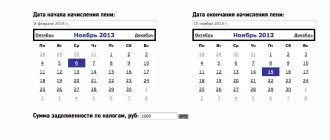When faced with the need to pay bills for the first time, many people are initially confused.
Difficulties can be caused by: installing a new meter, switching to a two-tariff meter, or even setting up an autonomous power supply system, for which you need to independently calculate the approximate power consumption without a meter.
Let's find out how to calculate the payment for electricity using the meter in all of the above cases. Everything is much simpler than it seems!
What methods of transmitting evidence are there?
You can submit your testimony in any way convenient for you:
- through the Personal Account of a private client on the website of PJSC Mosenergosbyt;
- by phone Contact: +7 (499) 550-9-550 via voice control service;
- on the Moscow government services portal.
- through terminals for receiving readings installed in the branches of PJSC Mosenergosbyt and Multifunctional centers for providing state and municipal services;
- when paying through Qiwi and Sberbank terminals (subject to payment being made between the 15th and 26th).
How to use the Voice Control service?
When you contact the Contact Center by phone +7 (499) 550-9-550, you can independently, without waiting for an operator’s response, transfer meter readings or obtain the necessary information. To do this, in the voice menu after the question “Tell me what interests you?” you need to say your question.
You can read the instructions for operating the voice service on the website of PJSC Mosenergosbyt.
Attention!
The personal account number and meter readings must be given strictly in one digit. You can enter data using the telephone keys. To undergo automatic identification, we recommend linking your phone number to your Personal Account in the Client’s Personal Account.
Types of meters
Accounting for consumed electricity in all electrified premises is carried out using a special meter. Electric meters are different. For example, digital and induction (mechanical).
Induction counters are equipped with a mechanical dial. It consists of several closely spaced wheels. One full rotation of the wheel indicates that you have just used 1000 kilowatt-hours. These wheels are driven by a mechanical disc. You can also observe it in the glass window of the device. The faster the disk spins, the more electricity you are currently consuming. Mechanical meters have been proving their efficiency and resistance to voltage surges for decades. Perhaps your mechanical counter witnessed the thaw, perestroika and the birth of a new Russia. And it is possible that he could meet your grandchildren, but most likely in the coming years you will replace him for the sake of progress. If it hasn't already been replaced.
A young competitor to the mechanical counter is the electronic counter. These devices are more expensive than their mechanical counterparts. But their readings are unusually accurate, and some models can operate in two-phase mode (more on this below). Electronic meters show the amount of energy consumed in a special viewing window. They allow you to take readings remotely, store the history of readings in memory, and do not allow third-party interference in the system for the purpose of stealing kilowatts. But they can hardly survive power surges. When there are differences, electronic meters often fail, and their repair is expensive.
How are electricity bills calculated?
The amount payable is calculated in one of the following ways:
- Based on the meter readings you provided; Provided that the meter readings were transmitted in the period from the 15th to the 26th inclusive
- Based on meter readings taken by employees of Mosenergosbyt PJSC; Control readings are taken by an employee of Mosenergosbyt PJSC 2 times a year.
- If there are no readings in the billing period, the amount payable is calculated based on the average monthly consumption volume;
- In the absence of information on the average monthly consumption volume, the calculation is made based on the consumption standard.
Why do you need to calculate electricity?
To calculate the electricity consumption recorded by the electric meter, you will need to take readings from it twice.
Every month, the apartment owner must record readings from the electricity meter. Values are expressed in kilowatts per hour (kW/h). The recorded data must be shown to a full-time representative of the organization involved in energy supply, or the required amount must be calculated independently. The calculation is not difficult; in some meter models, for convenience, the required values are highlighted in color. A meter is installed at the entrance to the apartment and after the transformers.
How to notify an organization about energy costs:
- Come to the service office in person and report the readings taken.
- Send data via the Internet.
- Call the organization and dictate the information over the phone.
- Include readings in the column when paying receipts.
After this, the required amount is paid.
What is ODN and how is it calculated?
ODN - general house needs. Each apartment building receives a certain amount of utility resources, the bulk of which is consumed by residents. Some of the resources go to maintaining the house and maintaining common property. Not only utilities inside the apartment are paid, but also utilities used for general house needs.
The amount of one tax charge for electricity may include costs for:
- Lighting of common areas (staircases, vestibules and entrance areas);
- Energy consumed by intercoms;
- Energy consumed by elevators;
- Energy consumed by other electrical equipment; Used for general house needs (for example, surveillance cameras, pumps pumping water to the upper floors, automatic heat control system, etc.).
Each apartment building has an individual set of electrical equipment. Calculation of the consumed electricity at the ODN is carried out in accordance with the Decree of the Government of the Russian Federation No. 354 dated May 6, 2011, P.44:
- Based on the readings of collective metering devices; The expense for one-room registration is determined as the difference between the expense of a certain collective metering device and the total consumption of residential and non-residential premises, then divided by the total area of such premises, and then multiplied by the individual area of each of them.
- In the absence of a common house meter, the calculation is made according to the standard. If the electricity consumption for ODN is determined based on the ODN standard, then the value obtained by multiplying the standard by ODN and the area of the premises included in the common property in an apartment building is divided by the total area of the premises, and then multiplied by the individual area of each of them .
Cost calculation for the population
According to paragraph 5 of the Basic Provisions of the RRE, it is determined that the supply of electrical energy (power) to the population and equivalent categories of consumers is carried out at regulated prices (tariffs) established by the executive authority of the constituent entity of the Russian Federation in the field of state regulation of tariffs.
The cost of electric energy supplied to the population at regulated prices (tariffs) is determined as the product of the regulated price (tariff) for a given group of consumers, established by the executive authority of the constituent entity of the Russian Federation in the field of state regulation of tariffs, and the volume of actual consumption of the population.
- Tariffs for the population and consumers equal to the population
Why does the electricity consumption for the single-circuit heating unit change monthly and how can we achieve a reduction in the amount for the single-unit heating unit?
The amount of electricity consumption for one unit is calculated and depends on several factors and may change every month.
The cost of ODN depends on factors such as:
- Intensity of operation of electrical equipment installed on the ODN;
- Regularity of transmission by residents of the house of individual readings of metering devices to PJSC Mosenergosbyt (if the readings are not transmitted, then the calculation is formed based on the calculated average monthly volume of consumption, and when transmitting or taking readings in the subsequent billing period, the volume of consumption will be recalculated based on actual data);
- Absence of unaccounted and/or non-contractual consumption;
- Technical condition of intra-house wiring (electrical wiring in old houses may be worn out and this increases technological losses of electricity in intra-house networks);
- Equipping residential premises with working metering devices.
How to choose an electricity tariff in the Moscow region
More and more residents of the Moscow region are consciously approaching the choice of electricity tariff. The cost of this utility service is currently based on several conditions. If you know all the nuances of determining the final price for electricity, you can save a lot of money. Read about what electricity tariffs are in the Moscow region and which one is better to choose in the material of the mosreg.ru portal.
Gas or electric stove
The cost of supplied electricity directly depends on the type of stove and heating appliances installed in the house. If the stove is gas, then the price of one kilowatt/hour will be 5.04 rubles, and if it is electric - 3.53 rubles. Electricity tariffs also vary depending on the time of day. In this case, the cost of a single-rate tariff is given.
Such a significant difference (more than 30%) is explained by the fact that electric stoves consume a large amount of electricity, and the reduced rate allows the final price tag not to soar to enormous values. The same goes for electric batteries. However, it should be remembered that all equipment must be officially installed and included in the project documents for the house.
How to gasify a private house in the Moscow region>>
Differentiated tariffs for citizens
In the case of a single-rate tariff, the cost of one kilowatt/hour of electricity is fixed and does not change.
As for differentiated tariffs, the price for electricity fluctuates depending on the time of day. So, you can choose tariffs where the cost of electricity is divided into two or three time periods. The two time zones are daytime (from 7 a.m. to 11 p.m.) and night hours (from 11 p.m. to 7 a.m.). At the same time, the cost of night hours is much lower - 2.09 rubles per kilowatt/hour versus 5.80 rubles per kilowatt/hour during the day (the cost is indicated for houses with gas stoves). The night rate is almost 3 times lower than the day rate. This means that people whose main electricity consumption is at night have the opportunity to save a lot.
Another tariff plan involves differentiating the cost of a kilowatt/hour over three time periods. From 7 to 10 a.m. and from 5 to 9 p.m., electricity is the most expensive (6.55 rubles), since this is the peak period. Half-peak falls on the time periods from 10 to 17 hours and from 21 to 23 hours (5.04 rubles). The cost of consumption at night (from 11 p.m. to 7 a.m.) is the same as with a two-rate tariff (2.09 rubles per kilowatt/hour).
The cost of differentiated tariffs is also given for houses equipped with gas stoves.
How to apply for technical connection to electrical networks in the Moscow region>>
Tariffs for rural population
The cost of a kilowatt/hour of electricity for residents of rural areas differs from the price of a kilowatt/hour in cities. For all tariff plans it is significantly lower. Moreover, it is identical to the cost of all tariffs for residents of cities whose homes are equipped with electric stoves. The single-rate tariff is 3.53 rubles per kilowatt/hour, the two-rate tariff is 4.06 rubles during the daytime, and 1.46 rubles at night. In the three-rate tariff, the peak zone is 4.59 rubles, and the half-peak zone is 3.53 rubles per kilowatt/hour.
Thus, for an ordinary resident of the Moscow region, the optimal choice would be one-rate and two-rate tariff plans. The latter is suitable for those citizens who consider themselves night owls and for some reason stay awake at night. As for the three-rate differentiation, such a choice is advisable only under the condition of clear control of electricity consumption by the resident.
How to pay for housing and communal services online in the Moscow region>>
For other consumer groups
Some consumer groups are considered equal to the population, and the same tariffs apply to them. These are, for example, residential areas at military units and correctional labor institutions, homeowners' associations and various cooperatives, gardening or gardening associations of citizens. In addition, the same tariffs are used to calculate the cost of a kilowatt/hour for religious organizations that are supported by parishioners. So, with a one-rate tariff it costs 5.04 rubles, with a two-rate tariff it costs 5.80 and 2.09 rubles, and with a three-rate tariff, depending on the reduction in peak consumption, it costs 6.55, 5.04 and 2.09 rubles.
For non-public groups, tariff rates may vary depending on the required network voltage, power and time of day. The price of a kilowatt/hour is determined in this case during market trading.
Find out how to recalculate housing and communal services when leaving home>>
Ivan Pyshechkin








